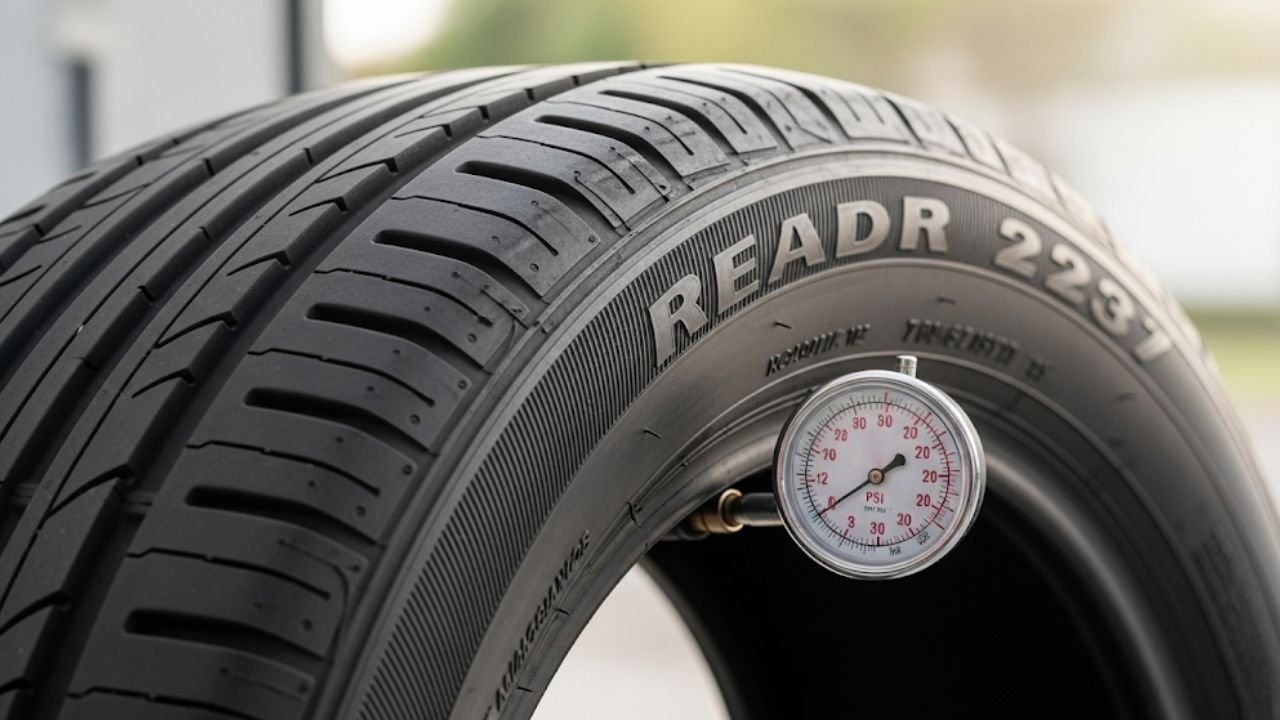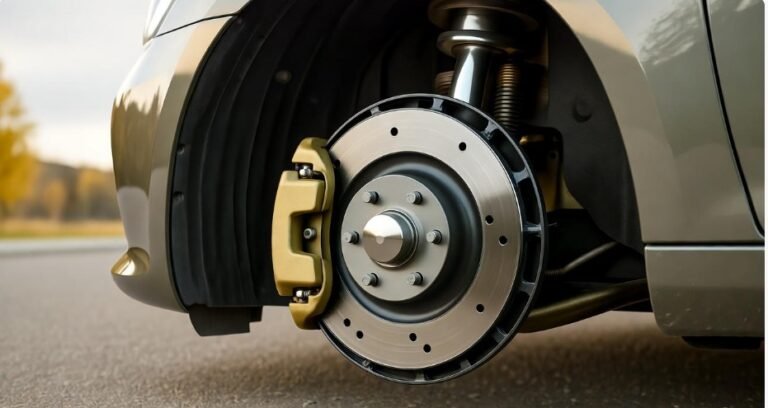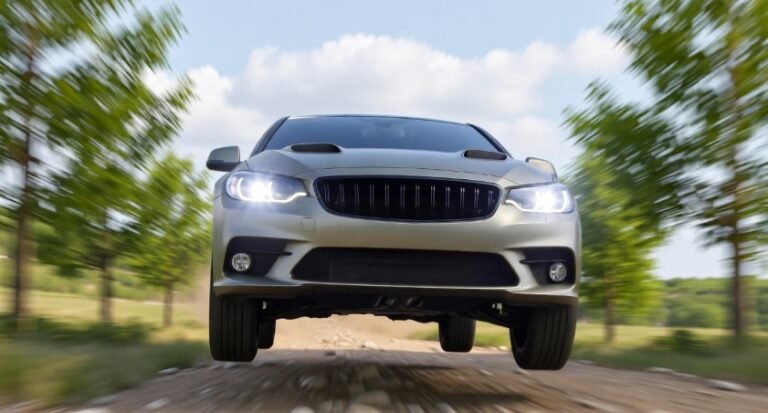Is 32 PSI Good Tire Pressure?

Have you ever glanced at your dashboard and seen that little tire pressure light flick on? Or maybe you’ve stopped at a gas station pump, wondering, “Is 32 PSI good tire pressure?” You’re not alone. I’ve had that exact thought more times than I can count, especially during road trips or after a sudden weather change.
It might feel like such a small number—just 32 psi—but trust me, those digits carry a lot of weight. Quite literally. That tire pressure decides how your car handles corners, how much gas you use, and whether your tires last 20,000 miles or fizzle out in half that time.
Let’s dive into what 32 psi actually means, why it’s often recommended, and whether it’s the golden number your tires truly need—or just a myth passed down at quick-lube joints and gas station air pumps.
What Does PSI Actually Mean?

Think of it like blowing up a balloon. Too soft? The balloon’s floppy and slow. Too full? It’s tense and ready to pop. Your car tires work the same way.
Here’s what PSI controls:
-
Tire grip – Too low and you lose traction.
-
Fuel economy – Overinflated tires wear unevenly and burn more gas.
-
Ride comfort – Too much or too little air and you’ll feel every pothole.
Most passenger cars have a recommended tire pressure between 30–35 psi. That makes 32 psi sit right in the sweet spot… but like coffee strength or spice level, it really depends on personal taste—and the type of car you drive.
Is 32 PSI the Gold Standard or Just a Guess?
Let me tell you about the time I rented a compact SUV on a road trip through the Rockies. The rental guy said, “Keep it at 32 psi, you’ll be fine.” And sure, the ride was smooth—until the temperature dropped overnight, and the dashboard lit up like a Christmas tree.
Turns out, 32 psi was fine for warm weather… but not for 9,000 feet of elevation and 20°F temps.
Here’s the real deal: 32 psi is not a universal rule. It’s a common average, but your ideal tire pressure depends on:
-
Vehicle make and model
-
Tire size and load rating
-
Current temperature and altitude
-
Whether you’re towing, hauling, or driving solo
Always check the driver’s door jamb. That little white sticker? It tells you the exact PSI your tires need. It’s custom to your car.
Why Your Car Might Recommend 32 PSI
Still, 32 psi is a pretty typical number, especially for sedans, crossovers, and small SUVs. Why? Because it offers the best balance for everyday driving.
Let’s break it down in a table:
| Vehicle Type | Recommended PSI Range | Is 32 PSI Good? |
|---|---|---|
| Compact Sedan | 30–35 psi | ✅ Yes, it’s ideal |
| Mid-size SUV | 32–36 psi | ✅ Often recommended |
| Light Truck | 35–40 psi | ⚠️ A bit low |
| Sports Car | 30–36 psi | ✅ Possibly, check specs |
| Heavy-Duty Truck | 40–60 psi | ❌ Way too low |
So, if you’re driving a Toyota Corolla, Honda Civic, or Ford Escape, then yes—32 psi is a great starting point.
But if you’re behind the wheel of a Ford F-250 or hauling cargo in a Sprinter van? You’re going to need way more.
What Happens If You Drive Below or Above 32 PSI?
Imagine running in sneakers with too little air. It’s awkward. Your feet slap the ground, your legs ache, and you burn out faster. The same happens with underinflated tires.
Let’s look at both sides:
Too Low (<32 PSI):
-
Poor fuel efficiency
-
Mushy handling
-
⚠️ Higher tire wear on edges
-
❗ Higher risk of blowouts on highways
Too High (>32 PSI):
-
️ Bumpy, noisy ride
-
Increased center wear
-
⚡ Less road grip, especially in rain
-
More prone to punctures
Think of 32 psi as the sweet center of a see-saw. Tip too far in either direction, and things get out of balance fast.
Temperature Changes and Tire Pressure: Why 32 PSI Isn’t Always “Set It and Forget It”
One chilly morning, I noticed my tires looked a bit saggy. I pulled up the pressure reader. All four tires had dropped to 28 psi—overnight! Nothing was wrong with the tires. The air just shrank in the cold.
Here’s a handy tip:
For every 10°F drop in temperature, tire pressure drops by about 1 psi.
So if your tires were set to 32 psi in July and it’s now a frosty December morning, they might be sitting at 28 or 29 psi. That’s enough to trigger warning lights—and cause rougher handling.
Solution?
-
Check tire pressure monthly
-
Use a digital tire gauge
-
Adjust when cold (before driving)
-
Recheck during weather shifts
When 32 PSI Might Not Be Enough
Certain situations demand higher tire pressure, even if 32 psi seems right most of the time. For example:
-
Towing a trailer? You’ll need more air to support the extra weight.
-
Long highway trips? Higher psi reduces heat buildup.
-
Heavy loads in the back? More pressure ensures balanced grip.
In these cases, your car’s manual will often recommend a higher psi for rear tires than the front. It’s all about distribution.
Here’s an example from my own experience with my old Subaru Outback:
When unloaded: 32 psi front / 30 psi rear
When towing: 35 psi front / 38 psi rear
That little difference? It made the ride safer and way smoother—especially at 70 mph on I-90.
Pros and Cons of Setting Your Tires to 32 PSI Every Time
Let’s say you just want to “set it and forget it.” You plug in 32 psi no matter the season, car type, or trip. Is that smart?
Here’s an honest breakdown.
✅ Pros of Always Using 32 PSI
-
Convenient baseline – For most compact and mid-size cars, it’s a safe middle ground.
-
Better ride quality – Offers a smoother ride than overinflated tires.
-
Reduces guesswork – Easy to remember and quick to apply.
-
Good for fuel economy – Prevents underinflation, which wastes fuel.
-
Decent tire wear – Keeps your tread wearing evenly in standard conditions.
⚠️ Cons of Always Using 32 PSI
-
❌ Not ideal for trucks or vans
-
❌ May be too low in extreme heat or high loads
-
❌ Too high for some winter tires or specific luxury models
-
❌ Doesn’t adjust to cold weather shrinkage
-
❌ Risks underperformance if your car requires 36+ psi
It’s like wearing size 9 shoes because it fits most people—even if your feet are size 10. Sure, it works, but it’s not perfect. 32 psi is often fine, but not always right.
My Personal Experience With Tire Pressure Safety
I’ll never forget a highway trip back in 2021. I’d filled all four tires to 32 psi the night before. Midway through a 300-mile drive, I noticed a shaky ride and drifting to the right. Pulled over—sure enough, one tire was at 25 psi.
Turns out, a slow leak turned a “safe” pressure into a risky one.
What I learned?
Tire pressure isn’t just a number—it’s a safety feature.
It affects:
-
Braking distance
-
Cornering ability
-
Road grip in wet conditions
-
Emergency swerves or lane changes
One psi off won’t kill your ride. But five or six? That’s enough to cause a spinout in rain—or worse.
How to Check and Adjust Tire Pressure Properly
You don’t need to be a mechanic. Just follow this simple checklist:
✅ Tire Pressure Checklist
-
Check in the morning – Before you drive, when tires are cold
-
Use a digital tire gauge – Cheap, accurate, and easy to read
-
Read your door sticker – It has the correct front and rear psi
-
⛽ Use air at gas stations or portable inflators
-
Adjust monthly, or before long road trips
Bonus Tip:
Rotate tires every 5,000–8,000 miles. Even pressure means nothing if one tire is balding.
Debunking Common Myths About Tire Pressure
There are so many myths about tire pressure—most of them passed around like playground gossip. Let’s clear some of them up.
Myth 1: “Just follow the number on the tire.”
That’s the maximum the tire can hold safely—not the number you should aim for. Always go with what your car’s manual or door sticker says.
Myth 2: “Higher pressure means better gas mileage.”
Sure, to a point. But overinflated tires wear faster and lose grip. It’s a short-term win for long-term damage.
Myth 3: “You only need to check pressure once a year.”
Nope. Tire pressure changes monthly due to weather, altitude, and wear. Check it monthly—especially before road trips.
Myth 4: “All tires on every car should be the same PSI.”
Not true. Many cars (especially SUVs) have different PSI recommendations for front and rear tires.
Final Thoughts: So, Is 32 PSI Good Tire Pressure?
Let’s bring it all home. If your car recommends 32 psi, then absolutely—yes, 32 psi is good tire pressure.
But…
If your vehicle calls for 36 psi, then 32 is too low. If your truck needs 50 psi, 32 is dangerously low. The point is—context is everything.
It’s like asking, “Is medium coffee the right size?” It depends on the person.
So, use 32 psi as a smart default, but let your car—and your conditions—do the final talking.
FAQs: Quick Answers About 32 PSI and Tire Pressure
❓ Is 32 psi good tire pressure for all cars?
No. While 32 psi works for many sedans and crossovers, always check your vehicle’s specific recommendation. Larger vehicles often need more.
❓ Can I drive with 30 psi instead of 32?
Yes, but it may cause reduced fuel economy and slightly poorer handling. If it drops below 28 psi, inflate it soon.
❓ Is it better to have slightly over or under 32 psi?
Slightly over (like 33–34 psi) is better than under. Underinflation causes faster wear and higher blowout risks.
❓ How often should I check tire pressure?
Check at least once a month and always before a road trip or weather change.
❓ Does tire pressure affect gas mileage?
Absolutely. Underinflated tires increase rolling resistance, which makes your engine work harder and burn more fuel.
❓ What if my tires say “Max 44 PSI”?
That’s the maximum load limit, not your target pressure. Follow the number on the driver’s door sticker.
❓ Why does my tire pressure keep changing?
Temperature, altitude, and tire leaks can all cause pressure shifts. It’s normal—but you need to stay on top of it.
❓ Can tire pressure affect braking?
Yes. Incorrect PSI affects tire contact with the road, which impacts your ability to brake quickly and safely.





